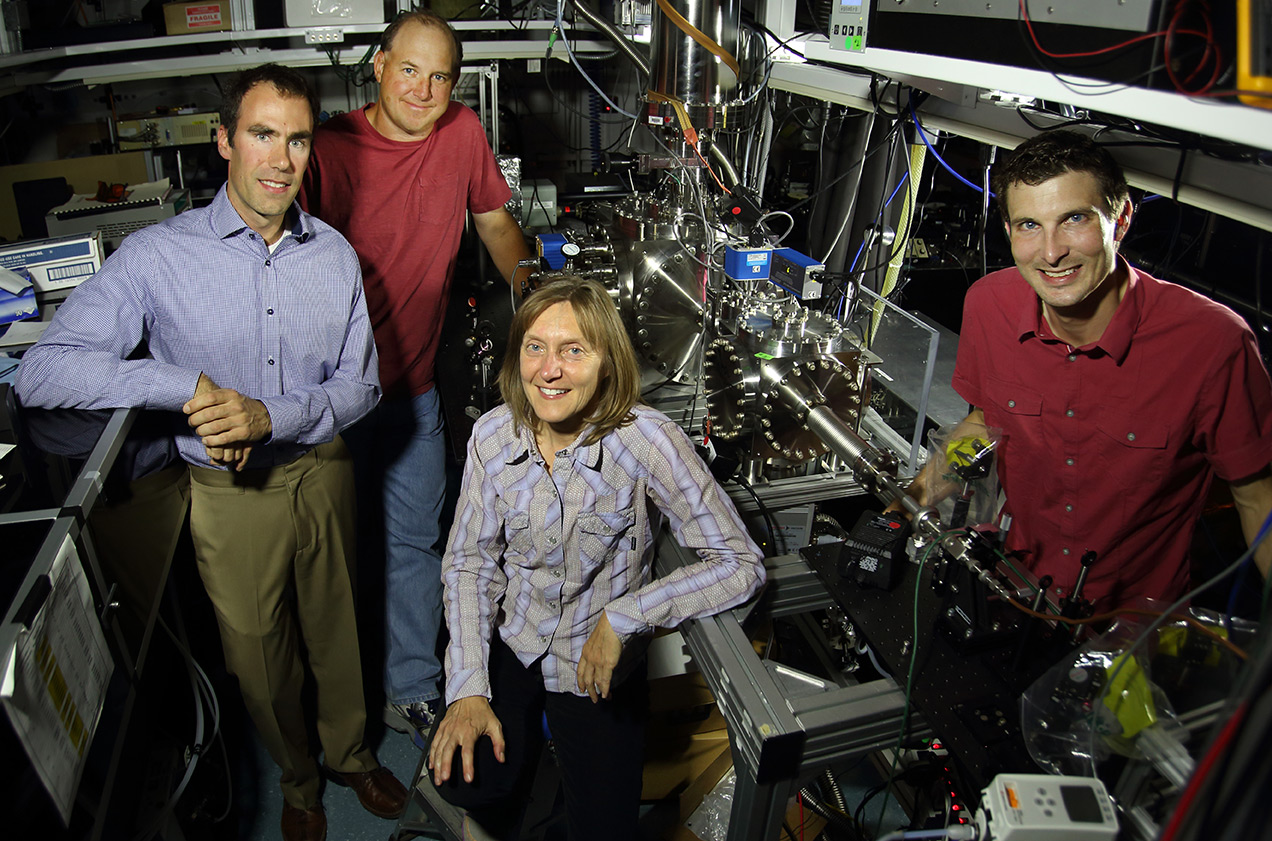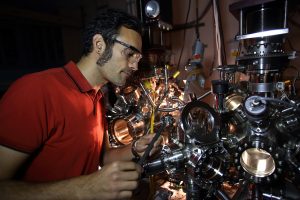
Sandia researchers focus on soot, furans, oxygenated hydrocarbons
By Michael Padilla

Researchers at Sandia’s Combustion Research Facility are developing the understanding necessary to build cleaner combustion technologies that will in turn reduce climate impact.
Their work focuses on understanding the oxidation chemistry of organic carbon species critical to many processes including controlling emissions of toxic combustion byproducts to reduce climate change brought on by humans. Researchers expect this to work to benefit geosciences, astrophysics and energy applications.
“Soot released from combustion sources is of global concern, as it causes premature deaths, global warming and hydrological changes,” said Sandia researcher Olof Johansson. “In addition, furans and other large oxygenated hydrocarbons are highly toxic and very frequently observed in combustion emissions.”
Their research was published in the July 2016 issue of the Proceedings of the National Academy of Sciences in a paper titled, “Formation and emission of large furans and oxygenated hydrocarbons from flames.” The paper is co-authored by Johansson and Sandia researchers Hope A. Michelsen, Paul E. Schrader, Matthew F. Campbell and Farid El Gabaly; Tyler Dillstrom, and Angela Violi of the University of Michigan; Matteo Monti of Stanford University; and Denisia M. Popolan-Vaida, Nicole K. Richards-Henderson and Kevin R. Wilson of Lawrence Berkeley National Laboratory.
Read more.